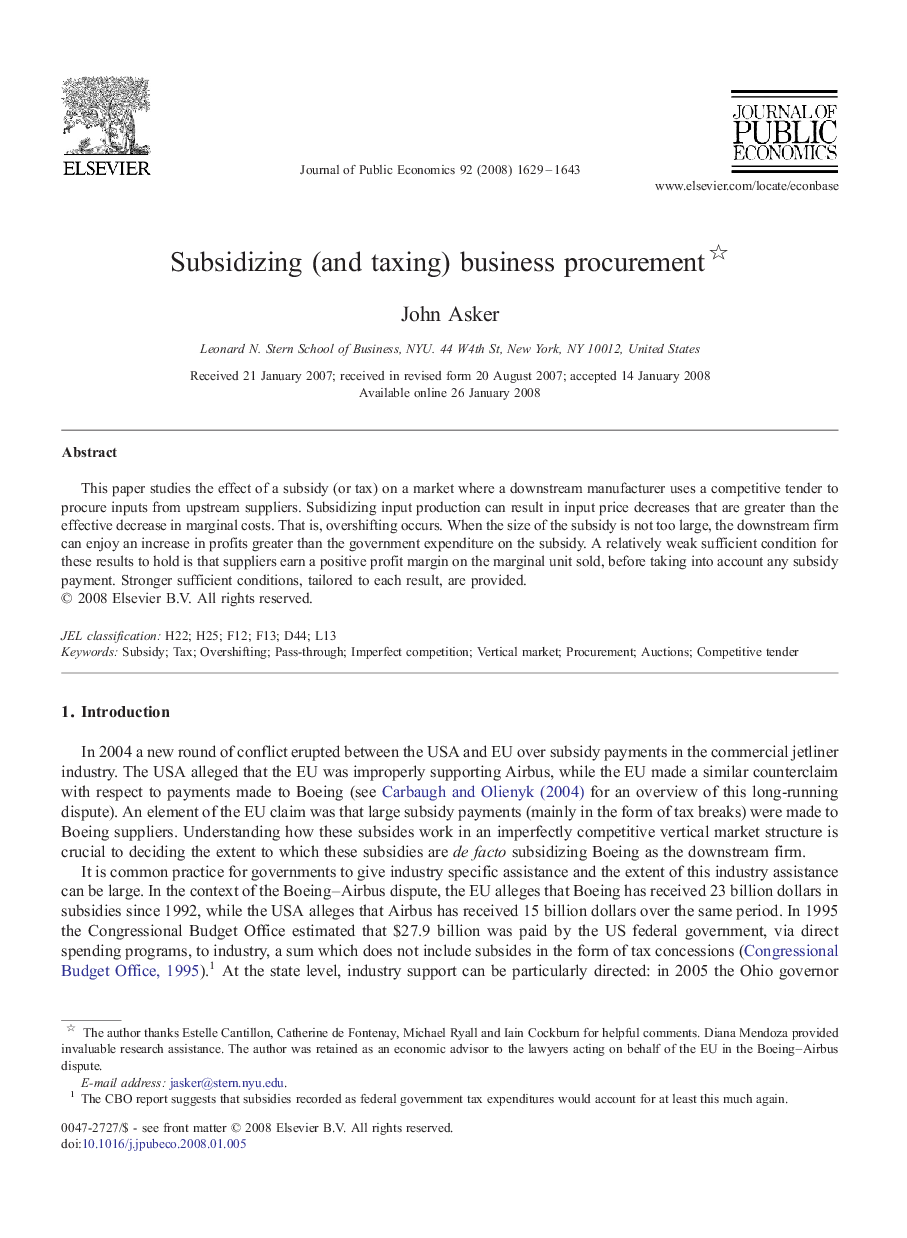| Article ID | Journal | Published Year | Pages | File Type |
|---|---|---|---|---|
| 968816 | Journal of Public Economics | 2008 | 15 Pages |
Abstract
This paper studies the effect of a subsidy (or tax) on a market where a downstream manufacturer uses a competitive tender to procure inputs from upstream suppliers. Subsidizing input production can result in input price decreases that are greater than the effective decrease in marginal costs. That is, overshifting occurs. When the size of the subsidy is not too large, the downstream firm can enjoy an increase in profits greater than the government expenditure on the subsidy. A relatively weak sufficient condition for these results to hold is that suppliers earn a positive profit margin on the marginal unit sold, before taking into account any subsidy payment. Stronger sufficient conditions, tailored to each result, are provided.
Related Topics
Social Sciences and Humanities
Economics, Econometrics and Finance
Economics and Econometrics
Authors
John Asker,
